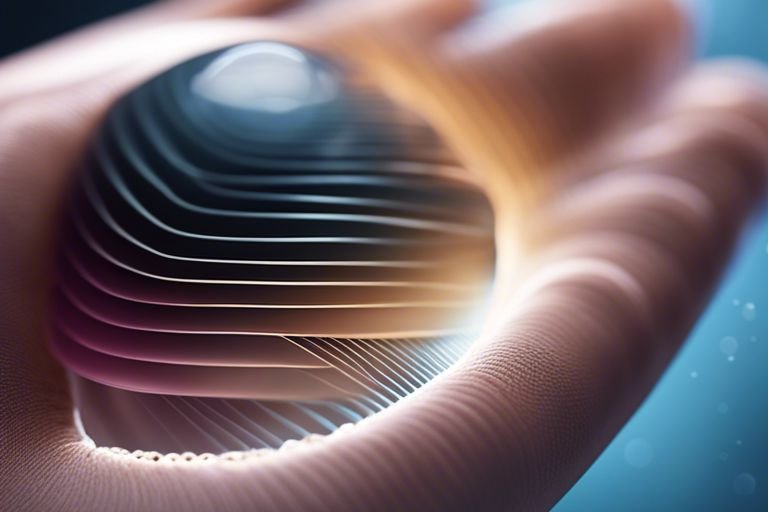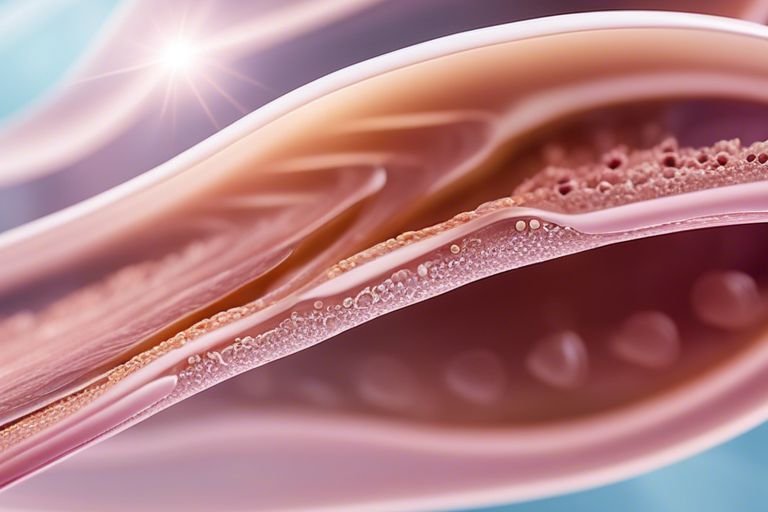Nails are fascinating structures that serve both functional and aesthetic purposes. They are made up of a strong protein called keratin, which also forms hair and the outer layer of our skin. Keratin provides nails with their toughness and resilience, helping them protect the sensitive tips of our fingers and toes. Understanding the composition of nails can shed light on their importance in our daily lives, such as aiding in grasping objects and providing support to our digits. However, issues with nails, such as infections or trauma, can lead to discomfort, pain, and even serious health concerns. By learning more about what nails are made of, we can appreciate the role of keratin in keeping our nails healthy and strong.
Key Takeaways:
- Keratin is the main component: Nails are made up of a protein called keratin, which is also found in hair.
- Structure and appearance: The structure and appearance of nails are determined by the amount and arrangement of keratin within them.
- Importance of care: Proper nail care, including a balanced diet and avoiding harsh chemicals, is essential for maintaining healthy nails.
Keratin: The Building Block of Nails
Keratin is a crucial protein that serves as the main structural component in nails. It is a tough, fibrous protein that provides strength and resilience to our nails, making them hard and durable.
Chemical and Biological Structure of Keratin
Keratin is made up of long chains of amino acids, specifically cysteine, methionine, and phenylalanine. These amino acids form a helical structure that gives keratin its strength and rigidity. In the biological structure, keratin molecules are packed closely together, creating a strong network.
Types of Keratin Found in Nails
Two main types of keratin are found in nails: alpha-keratin and beta-keratin. Alpha-keratin is the type of keratin that makes up human hair and nails, whereas beta-keratin is found in the scales, feathers, and beaks of animals. These different types of keratin have varying levels of durability and flexibility, depending on their structure.
- Alpha-keratin is the predominant type of keratin in human nails, providing strength and hardness. Beta-keratin, on the other hand, is more commonly found in the animal kingdom, offering different properties to nails. Assume that alpha-keratin contributes significantly to the resilience of human nails.
Understanding the types of keratin present in nails can shed light on the unique properties of these structures. The balance between alpha- and beta-keratin influences the overall toughness and flexibility of nails, making them suitable for their protective function.
- Alpha-keratin is the predominant type of keratin in human nails, providing strength and hardness. Beta-keratin, on the other hand, is more commonly found in the animal kingdom, offering different properties to nails. Assume that alpha-keratin contributes significantly to the resilience of human nails.

Nail Anatomy and Keratin Distribution
When it comes to understanding what nails are made of, it is essential to investigate into the nail anatomy and the distribution of keratin within them. Nails are primarily composed of a protein called keratin, which is also found in our hair and skin, providing strength and protection to the structures they form.
The Nail Matrix and Keratin Production
The nail matrix is the area where nail growth begins, and it plays a crucial role in the production of keratin. This region contains specialised cells that continuously divide and produce keratinocytes, the building blocks of keratin. Keratin production is a dynamic process that ensures the growth and renewal of nails. As keratinocytes move towards the nail bed, they undergo a process of keratinisation, where they fill with keratin and eventually become hard and compact, forming the nail plate.
Layers of the Nail and Their Keratin Composition
Within the structure of the nail, different layers can be identified, each with a specific keratin composition. The nail plate consists of multiple layers of hardened keratinocytes that are tightly packed together, providing durability and protection. The outermost layer, known as the nail cuticle, acts as a barrier to prevent infections and damage to the nail bed.
Underneath the nail plate lies the nail bed, which also contains keratin-rich cells that contribute to the overall strength of the nail. The presence of keratin in these layers ensures the resilience and function of the nails in daily activities.
Keratinization: The Process of Nail Formation
When we talk about nails, we often focus on their appearance and maintenance. However, understanding the process of nail formation, known as keratinization, is essential to truly appreciate the complexity of our nails. Keratinization is the biological process where keratin cells are produced and hardened to form our nails.
The Growth Cycle of Nails
Our nails go through a continuous growth cycle that consists of three main phases: anagen, catagen, and telogen. During the anagen phase, new cells are formed at the base of the nail bed. The catagen phase is a transitional period where the nail stops growing, and in the telogen phase, the nail is shed to make room for a new nail to begin forming.
Factors Influencing Keratinization and Nail Health
Several factors can influence the process of keratinization and ultimately impact the health of our nails. These factors include diet, hydration levels, stress levels, and overall health. Ensuring a balanced diet rich in protein and essential vitamins is crucial for promoting healthy nail growth.
- Proper nutrition: A diet rich in protein and essential vitamins promotes healthy nail growth.
- Hydration levels: Maintaining adequate hydration is essential for nail health.
- Stress management: High stress levels can impact keratinization and nail health.
Perceiving the importance of these factors and making the necessary adjustments can significantly improve the strength and appearance of your nails. By taking care of your overall health and addressing specific influencing factors, you can support the keratinization process and maintain healthy, beautiful nails.

The Functions of Nails and Their Keratin Composition
Protective Role of Keratin in Nails
Nails, composed primarily of keratin, play a crucial role in protecting the fingertips and toes from external damage. This fibrous structural protein, Keratin – an overview | ScienceDirect Topics, forms a sturdy barrier that shields the sensitive nail bed underneath from trauma, infections, and impact. The presence of keratin in nails contributes significantly to their strength and resilience, ensuring that they can withstand everyday activities.
Moreover, the unique composition of keratin in nails helps maintain their structural integrity and shape. This protein makes nails less prone to breaking, bending, or cracking, thus enhancing their protective function. The remarkable durability provided by keratin ensures that nails can fulfil their role in safeguarding the delicate tissues beneath them, promoting overall hand health.
Aesthetic and Societal Importance of Nails
Beyond their protective properties, nails also hold significant aesthetic and societal value. Well-groomed nails are often associated with good hygiene and personal care, reflecting an individual’s attention to detail. In many cultures, manicured nails are considered a symbol of elegance and refinement, adding to one’s overall appearance and self-confidence.
The grooming and decoration of nails have become a popular form of self-expression and creativity, with nail art trends constantly evolving. From classic French tips to elaborate designs, nails serve as a canvas for experimentation and fashion statements. The societal importance placed on well-maintained nails has led to the growth of the beauty industry, offering a wide range of nail care products and services to meet the demands of consumers.
Maintaining Healthy Nails
As the outer protective covering of our fingers and toes, nails play a crucial role in our daily lives. Maintaining healthy nails is essential not only for aesthetic reasons but also for overall well-being. There are several key factors to consider when it comes to nail health, including nutrition, proper hygiene, and regular care.
Nutrition and Nail Health
One of the most important aspects of maintaining healthy nails is ensuring that you have a balanced diet rich in essential nutrients. Protein, biotin, vitamins A and C, zinc, and iron are all crucial for promoting strong and healthy nails. Including foods such as lean meats, eggs, nuts, leafy greens, and fruits in your diet can help support nail growth and prevent brittleness.
Additionally, staying hydrated and avoiding excessive consumption of sugary or processed foods can also benefit nail health. Water is essential for maintaining nail moisture and preventing dehydration, which can lead to brittle nails. Making small changes to your diet can have a significant impact on the overall health and appearance of your nails.
Common Nail Disorders and Keratin Abnormalities
Despite our best efforts, nails can sometimes be affected by various disorders and abnormalities that affect their appearance and strength. Conditions such as fungal infections, psoriasis, eczema, and brittle nail syndrome can all impact the health of your nails. These disorders often involve abnormalities in the production or structure of keratin, the protein that makes up nails.
It is important to seek medical advice if you notice any significant changes in your nails, such as discolouration, changes in thickness, or pain. Early detection and treatment of nail disorders can help prevent further damage and promote healthy nail growth. Understanding the common nail disorders and their causes can empower you to take better care of your nails and seek the necessary treatment when needed.

The Role of Keratin – What Are Nails Made Of?
All things considered, nails are primarily made up of a protein called keratin, which is also found in hair and the outer layer of skin. Keratin provides strength and structure to nails, protecting the sensitive nail bed underneath. Understanding the composition of nails can help with proper nail care and maintenance to keep them healthy and strong. Maintaining good nail health involves a balanced diet, proper hydration, and protection from harsh chemicals or trauma. By caring for our nails and knowing what they are made of, we can ensure they remain not just aesthetically pleasing, but also functional and resilient.
FAQ
Q: What is Keratin and what role does it play in nails?
A: Keratin is a protein that serves as the main structural component in nails. It provides strength and protection to the nails.
Q: What are nails made of?
A: Nails are primarily made of a protein called keratin, along with small amounts of water and other trace elements.
Q: How do nails grow?
A: Nails grow from the nail matrix, a layer of cells at the base of the nail. As new cells are produced, older cells are pushed outwards, forming the nail plate.
Q: What factors can affect the health of nails?
A: Factors such as nutrition, hydration, overall health, and exposure to chemicals can all impact the health of nails.
Q: How can I keep my nails strong and healthy?
A: To maintain strong and healthy nails, it is important to eat a balanced diet, keep nails dry and clean, avoid harsh chemicals, and protect nails from physical damage.
Q: Can the appearance of nails indicate underlying health issues?
A: Yes, changes in the colour, texture, or shape of nails can sometimes be a sign of underlying health issues such as nutritional deficiencies or systemic diseases.
Q: Are there any common nail disorders that can affect the health of nails?
A: Yes, common nail disorders include fungal infections, ingrown nails, nail psoriasis, and brittle nails, all of which can impact the health and appearance of nails.
